#1914!Dean
Text
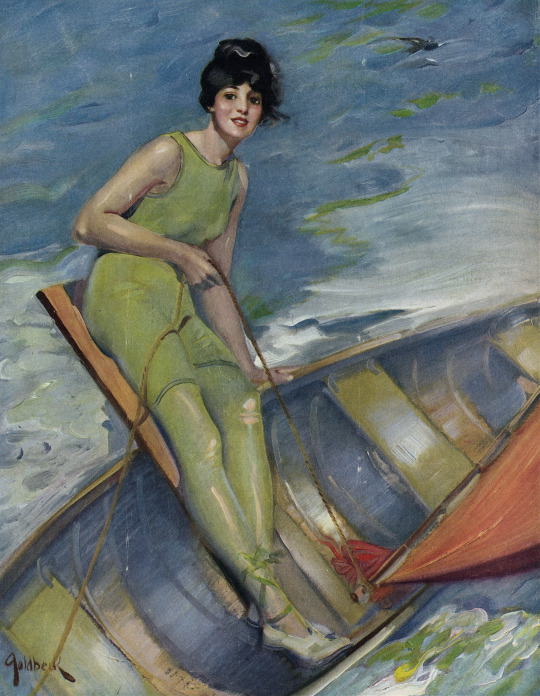
Watchful weighting, 1914
Walter Dean Goldbeck
198 notes
·
View notes
Text
If anybody wanted to write a crossover between L.M. Montgomery's books, here is a little help with the ages of the characters (@no-where-near-hero maybe it will be a tiny help for your fanfic):
Anne Shirley - born on 5th of March 1865
Gilbert Blythe - born in 1862 or 1863
James Matthew "Jem" Blythe - born in July 1893
Walter Cuthbert Blythe - born in 1894
Anne "Nan" and Diana "Di" Blythe - born in 1896
Shirley Blythe - born in 1888*
Bertha Marilla "Rilla" Blythe - born in 1900*
Gerald "Jerry" Meredith - born 1894
Faith Meredith - born 1895
Una Meredith - born 1896
Thomas Carlyle "Carl" Meredith - born 1897
Jims Anderson - born in August of 1914
Emily Byrd Starr - born on 19th of May 1888
Ilse Burnley - born in 1888 (probably)
Perry Miller - born in 1887
Frederick "Teddy" Kent - 1887 or 1888
Dean Priest - born in 1865
Patricia "Pat" Gardiner - born in 1913
Rachel "Rue" Gardiner - born in 1919
Winnifred "Winnie" Gardiner - born in 1910
Sidney "Sid" Gardiner - born in 1912
Joseph"Joe" Gardiner - born in 1908
Hilary Gordon - born in 1911
Elizabeth "Bets" Wilcox - born in 1913
David Kirk - born around 1893
Jane Stuart - born in May 1918 or 1919
Valancy Stirling* - born 1883**
Barney Snaith - born 1877**
Cecilia "Cissy" - born 1886**
Olive Stirling - born 1884**
Gay Penhallow - born in 1904***
Nan Penhallow - born in 1904***
Roger Dark - born in 1890***
Donna Dark - born between 1894 and 1896***
Virginia Powell - born between 1894 and 1896***
Peter Penhallow - born between 1888 and 1890***
Margaret Penhallow - born 1872***
Brian Dark - born 1916***
Hugh Dark - born in 1887***
Joscelyn Penhallow: born between 1889-1892***
*In both Anne of Ingleside and Rainbow Valley Shirley is two years older than Rilla. But in Rilla of Ingleside, he turns eighteen few months before Rilla... it is pure chaos. Rilla was supposed to be nearly fourteen, according to the RV, in 1914, but she is nearly fifteen in RoI. So I apologize, but I had a lot of trouble here...
**The Blue Castle is the most difficult to place in time. It is set several years before it was published, and in my own opinion: before Tangled Web and Pat of Silver Bush. Why? Because of this reference: "This was before the day of bobs and was regarded as a wild, unheard-of proceeding—unless you had typhoid." (The Blue Castle). Bobs were already "in fashion" at the beginning of Pat of Silver Bush (so, in 1919, when Pat was six years old: it was said that Winnie wanted to have her hair bobbed) and in Tangled Web (which is set in 1922). Yet, the cars, motorboats and movie theaters were a rather common occurence in The Blue Castle's times. But... there might be an explanation. Valancy doesn't live on PEI, which might have been a little "behind" the rest of Canada, as far as modern technology went. It is my own personal opinion, but I think that it might be set just before the war, at the same time as the end Emily's Quest. I know that the clothes seem more "modern" in TBC, but Emily wore "a little sport suit" and dress that was described as followed "there was so little of it". Teddy and Perry both had cars, as sone of Ilse's cousins. I would say that the Blue Castle book might be set around 1912-1913. Still, the timeline is extremely elusive. Please, let me know, dear Blue Castle Book Club's members, what is your opinion? I think I have read some amazing discussion about TBC's timeline a long time ago, but if I remember correctly, everyone was certain that this novel was set post WWI (me included, until this very moment when I tried to place Pat and Tangled Web and remembered the "bob" quote). So I choose 1912 as the beginning of TBC, when Valancy was twenty-nine.
*** the ages of characters in Tangled Web:
"They were first cousins, who were born the same day and married the same day,--Donna to her own second cousin, Barry Dark, and Virginia to Edmond Powell--two weeks before they had left for Valcartier. Edmond Powell had died of pneumonia in the training camp, but Barry Dark had his crowded hour of glorious life somewhere in France." (Tangled Web).
"Virginia Powell, whose husband had been dead eight years and who was young and tolerably beautiful" (Tangled Web).
"Valcartier, Quebec was the primary training base for the First Canadian Contingent in 1914."
- from: https://www.warmuseum.ca/firstworldwar/history/going-to-war/canada-enters-the-war/training-at-valcartier/
So, from this I assumed that Virginia's husband died in 1914 (so Tangled Web is set in 1922-23). Gay is 18 at the beginning, so she would be born in 1904. If Donna and Virginia were 18-20 when they got married, they would be 26-28 (so still "young"). at the beginning. Peter was 14 when Donna was 8, so he'd be 32-34 at the beginning of the book (same age or a bit older than Roger). Hugh was 35 at the beginning. I guess Joscelyn was a bit younger- most of LMM's heroines are at least two years younger than their love interest. I'd say she might have been 20-23 when she got married, so she'd be around 30-33 at the beginning of the book. I would say Brian is about six years old - he doesn't seem to attend school yet, but is big enough to be sent to the harbour. Margaret Penhallow was about fifty at the beginning of the book.
So sorry that this post was rather long, but it was a great fun to write (even if it took me A LOT of time). Thank you for reading. Please, let me know if you agree. Any feedback will be very welcome!
#lm montgomery#emily of new moon#anne of green gables#tangled web book club#tangled web#aogg#blue castle book club#the blue castle#Pat of silver bush#Rilla of ingleside#Rainbow Valley#I know I haven't included marigold or kilmeny#But I don't know how to place Kilmeny tbh#And I need to reread marigold before i will be able to include her here#I think I will reblog or add them later on
53 notes
·
View notes
Photo
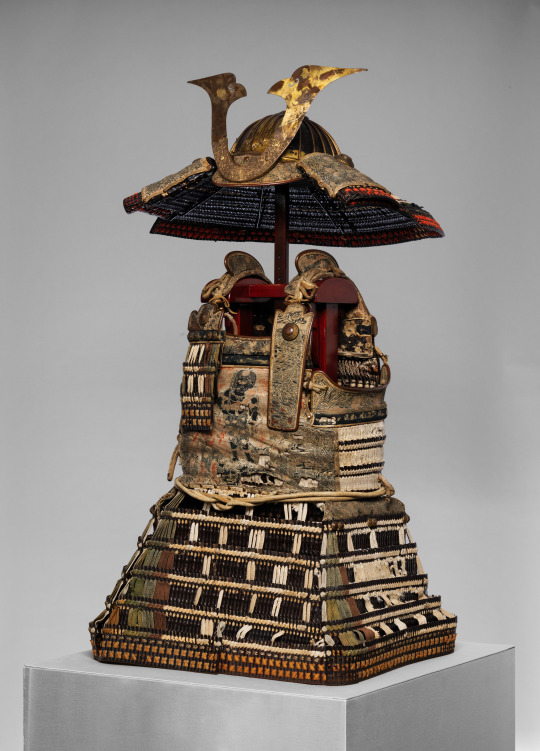
Armor (Yoroi) of Ashikaga Takauji (1305–1358). early 14th century. Credit line: Gift of Bashford Dean, 1914 https://www.metmuseum.org/art/collection/search/22506
#aesthetic#art#abstract art#art museum#art history#The Metropolitan Museum of Art#museum#museum photography#museum aesthetic#dark academia
22 notes
·
View notes
Text

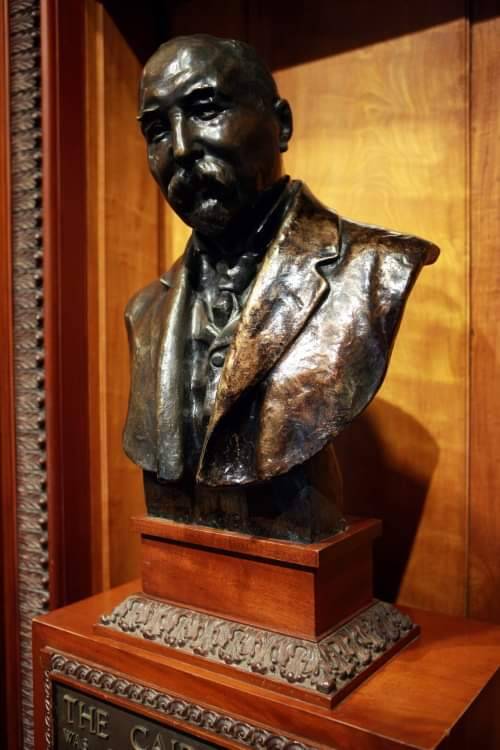
James Key Caird, Scottish jute baron and mathematician was born January 7th 1837 in Dundee.
Many of you outwith Dundee might not know of James Caird, but Dundee's Jute baron amassed a fortune through the jute trade in the city and donated up to £100,000 for the building of a new City Hall and Council Chamber that beares his name, Caird Hall, of which I took and posted pics of last week.
Caird was the son of linen and jute manufacturer Edward Caird. He was to become one of the city's most successful entrepreneurs, who used the latest technology in his jute mills. Established by his father in 1832, the Ashton Mill was located in the Hawkhill district of Dundee. Caird rebuilt it in 1876, and extended it in 1887 and 1908. He bought the Craigie Mill on Arbroath Road in 1905. Between his two mills, he employed around 2000 workers.
Having grown enormously wealthy, Caird became a generous benefactor. He gave substantial sums to extend the Dundee Royal Infirmary and gifted both the aforementioned Caird Hall, which dominates City Square, and Caird Park in the north of the city. The Marryat Hall, gifted by his sister Mrs Emma Grace Marryat, links to the Caird Hall.
Beyond Dundee, he funded the Insect House at London Zoo and paid for ambulances for use in the Balkan Wars . Caird also funded Sir Ernest Shackleton's Antarctic expedition of 1914-16, and Shackleton's boat was named in his honour, as was the Caird Coast of the Weddell Sea.
Caird was knighted in 1913 and was awarded an honorary degree by the University of St. Andrews. Becoming a recluse in his latter years, he died at his country seat, Belmont Castle near Meigle, and was buried next to his father in Dean Cemetery in Edinburgh.
He left money which was eventually used to purchase Camperdown Park for the city.
15 notes
·
View notes
Text
Black inventors

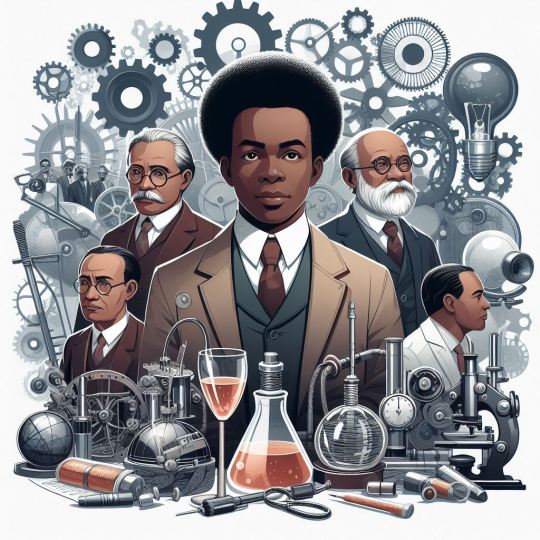

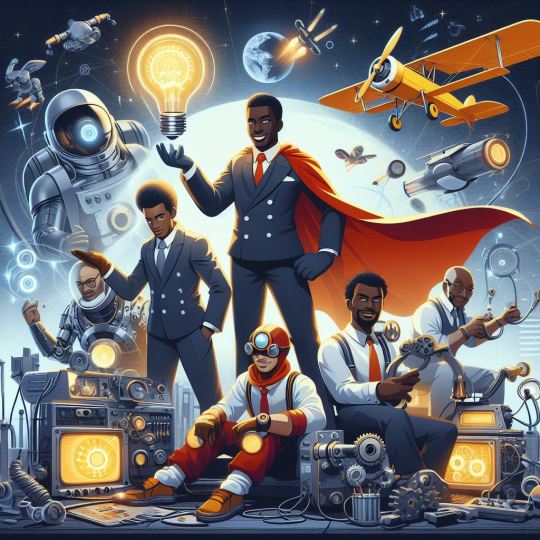









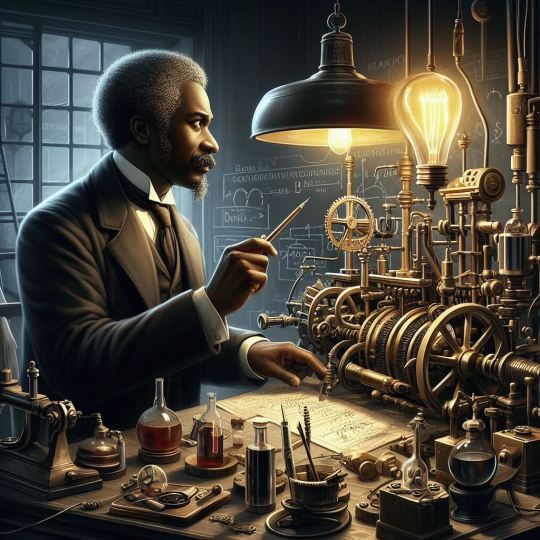
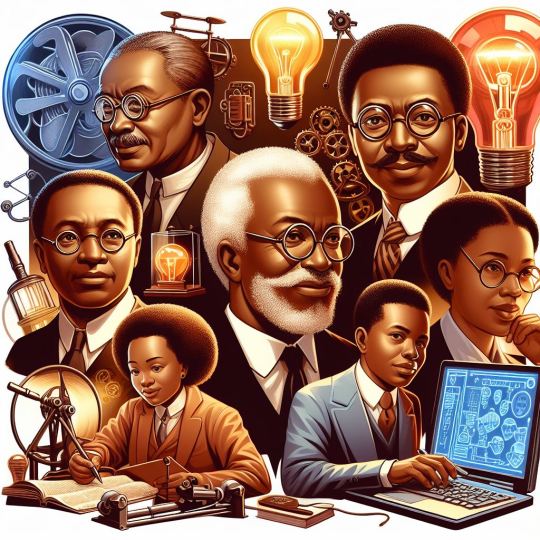
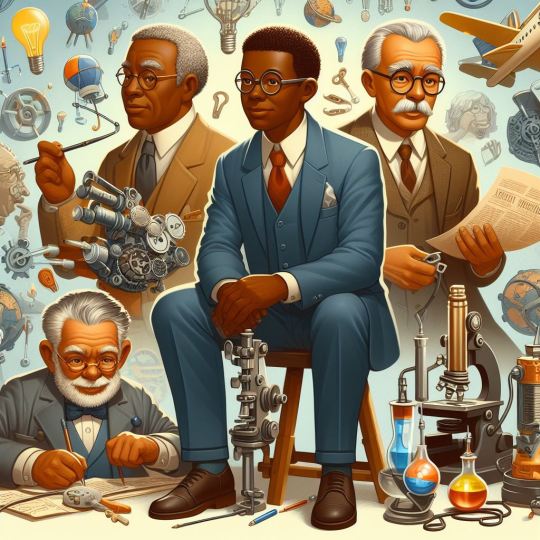


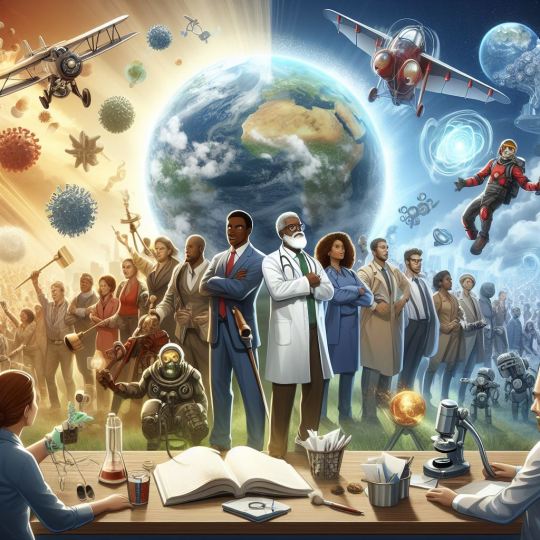
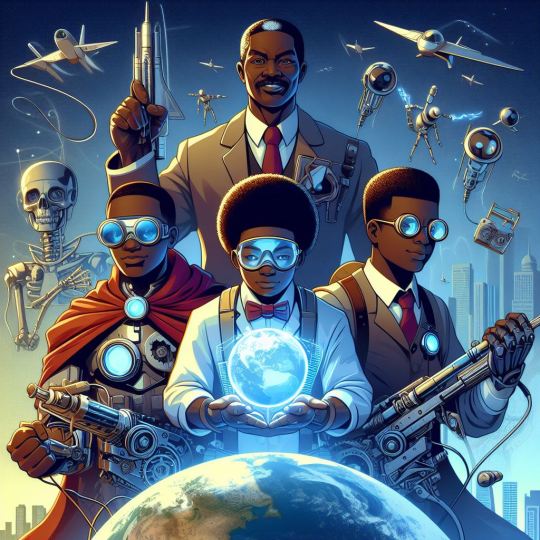

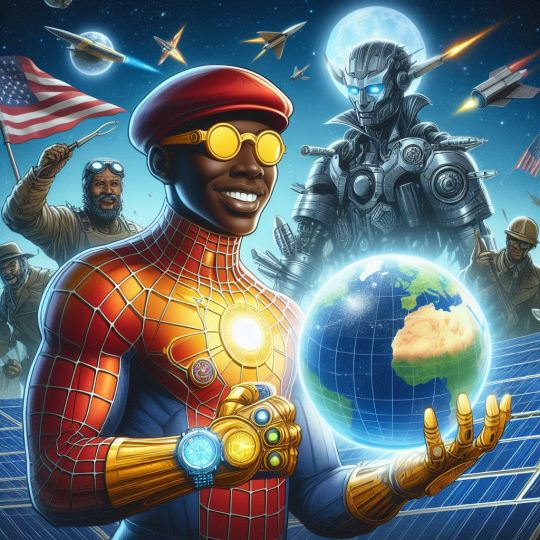


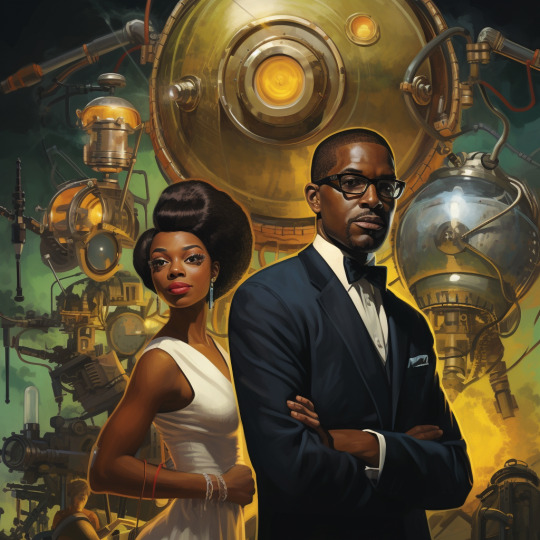

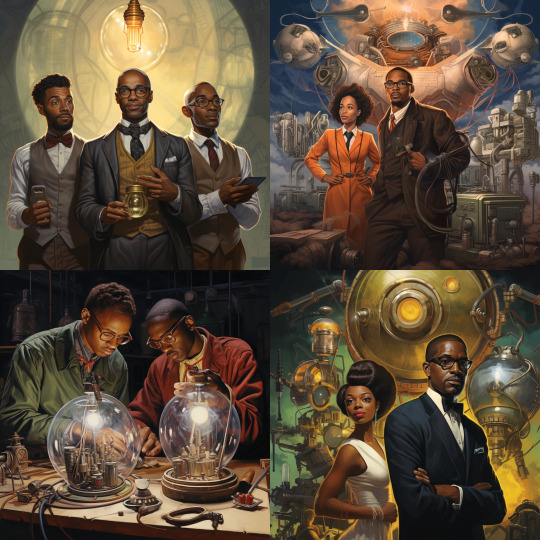
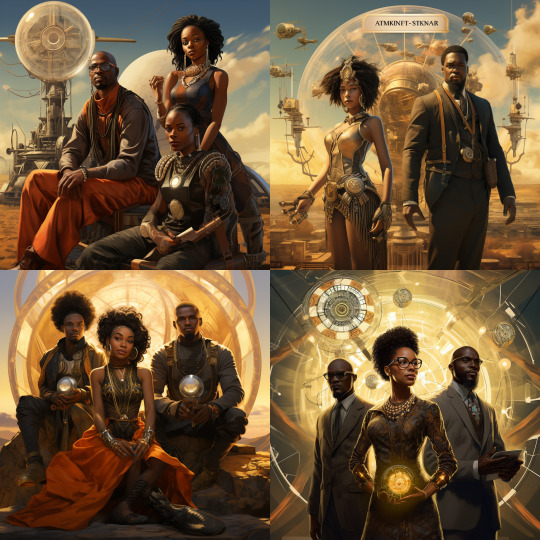

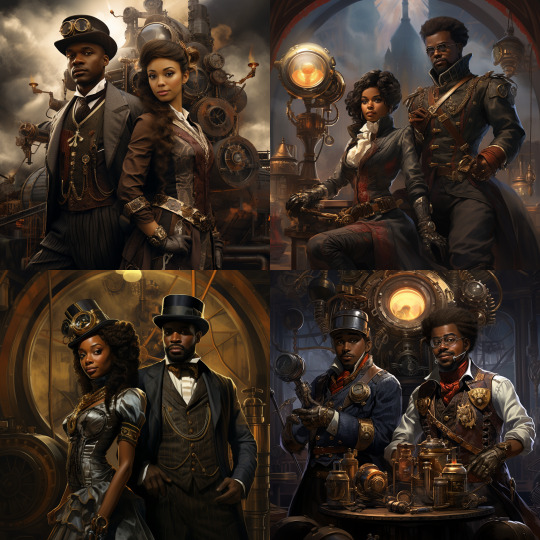
From Perplexity:
Famous black inventors have significantly contributed to various fields, from everyday household items to groundbreaking technological advancements. Here are some notable figures:
George Crum (1824-1914): A chef who is credited with inventing the potato chip in 1853[1].
Frederick McKinley Jones (1893-1961): Developed refrigeration equipment for trucks, trains, ships, and planes, receiving over 40 patents. His invention, the Thermo King, revolutionized the food and medical transport industries[1].
Granville T. Woods (1856-1910): Accumulated almost 60 patents, improving railroad functioning. Notably, he invented the induction telegraph system for train communication[1].
George Washington Carver (1864-1943): An agricultural chemist who developed 518 products from peanuts and sweet potatoes, including ink, dye, soap, and synthetic rubber[1].
Madam C.J. Walker (1867-1919): Became the first African American woman self-made millionaire by creating a line of hair products for African American women[1].
Garrett Morgan (1877-1963): Invented the traffic signal and a safety hood that served as a prototype for the gas mask[1].
Mary Beatrice Davidson Kenner: Patented the sanitary belt in 1957, a significant advancement in women's health and hygiene[1].
Thomas L. Jennings (1791–1859): The first African American to receive a U.S. patent, for a dry-cleaning process[4].
Patricia Bath (1942-2019): Invented a laser cataract treatment, becoming the first African American female doctor to receive a medical patent[4].
Mark Dean (1957-present): Holds over 20 patents, including contributions to the creation of the color PC monitor and the first gigahertz chip[4].
Elijah McCoy (1844-1929): Known for his invention of the automatic lubricator for oiling steam engines, leading to the phrase "the real McCoy" to denote something authentic[4].
These inventors have left a lasting impact on society, demonstrating ingenuity and perseverance in the face of challenges.
Citations:
[1] https://www.oprahdaily.com/life/work-money/g30877473/african-american-inventors/
[2] https://www.parents.com/kids/education/world-changing-black-inventors-that-every-kid-should-know-about/
[3] https://www.black-inventor.com
[4] https://www.biography.com/inventors/g46697619/famous-black-inventors
[5] https://en.wikipedia.org/wiki/List_of_African-American_inventors_and_scientists
From Gemini (formerly Bard):
20 Famous Black Investors with Short Descriptions:
Dr. Shirley Jackson: First Black woman to earn a doctorate in nuclear physics, invested in research and development for the U.S. Department of Defense.
Robert F. Smith: Founded Vista Equity Partners, a private equity firm with over $85 billion in assets under management. Known for his philanthropic endeavors.
Oprah Winfrey: Media mogul and investor, known for her investments in cable channels, production companies, and Weight Watchers.
Udayan I. Lekhraj: Founded CMG Partners, a private equity firm specializing in healthcare investments. Advocate for diversity and inclusion in venture capital.
Catherine Hughes: Founded Urban One, a media company serving the African American community. First Black woman to chair a publicly traded company in the U.S.
Rodney Bryant: Co-founded JUST Capital, a firm that measures and incentivizes corporations to prioritize stakeholder capitalism.
Ellen Johnson Sirleaf: Former President of Liberia, Nobel Peace Prize winner. Focused on economic development and investment in her country.
Ronald Lauder: CEO of Estee Lauder Companies, known for his investments in the beauty industry and philanthropic work.
Charles R. Bronfman: Chairman of The Seagram Company Ltd., invested in various industries including entertainment, real estate, and philanthropy.
John Rogers Jr.: Founded Ariel Investments, a mutual fund company with over $28 billion in assets under management. Advocate for responsible investing.
Marc Morial: Former mayor of New Orleans, currently president of the National Urban League. Focused on economic empowerment of Black communities.
Ronald Watkins: Founding CEO of Watkins Investing Group, invests in real estate and businesses within the Black community.
Melody Hobson: President and CEO of Ariel Investments, known for her work on financial literacy and diversity in boardrooms.
Aisha Evans: Founded BE Capital, a venture capital firm focused on Black and Latinx tech entrepreneurs.
Kevin Hart: Comedian and investor, known for his investments in production companies, streaming platforms, and sports teams.
Jay-Z: Rapper and entrepreneur, known for his investments in music streaming, sports teams, and venture capital funds.
Will Smith: Actor and investor, known for his investments in production companies, media platforms, and venture capital funds.
Serena Williams: Tennis champion and investor, known for her investments in venture capital funds focused on women and diverse founders.
Rihanna: Singer and entrepreneur, known for her investments in beauty brands, fashion lines, and technology startups.
LeBron James: Basketball player and investor, known for his investments in media companies, production companies, and technology startups.
Please note: This list is not exhaustive and can be debated in terms of individual importance and impact.
Reading List on Black Inventors:
Black Inventors: Lives That Mattered by Darlene R. Medford
Hidden Figures: The American Dream and the Untold Story of the Black Women Mathematicians Who Helped Win the Space Race by Margot Lee Shetterly
Lifting the Veil: Celebrating the Unsung Heroes of Black History by Michael Hill
Lost Genius: The Forgotten Black Inventors Who Changed the World by Dennis Freeman
Pioneering Women in American Mathematics: From Agnes Scott to Emmy Noether by Pamela Prochazka
Black Inventors in Science and Technology by Shirley J. Smith
A Colored Man's Reminiscences of James M. Whitfield: With Recollections of the Early Struggles of Colored Men in Boston by Wilbur H. Siebert
Inventing the Future: Black Inventors in Science and Technology by Geneva Gay
African Americans in Science, Math, and Invention by Darlene R. Medford
Black Inventors in the United States by Darlene R. Medford
This list offers a variety of books covering different periods and areas of innovation by Black inventors. Consider exploring further based on your specific interests.
I hope this information is helpful!
#african american history#black history month#black history month 2024#dalle3#midjourney#black inventors#blackhistorymonth#africanamericanhistory#afrofuturism#solar punk#steampunk
13 notes
·
View notes
Photo

Cryptid of the Day: Flying Shrimp
Description: According to the Philippine Journal of Science in 1914, American zoologist Dean Worcester claimed to have seen shrimp that flew out of the ocean like flying fish. He described the shrimp of being regular sized with transparent bodies.
78 notes
·
View notes
Text


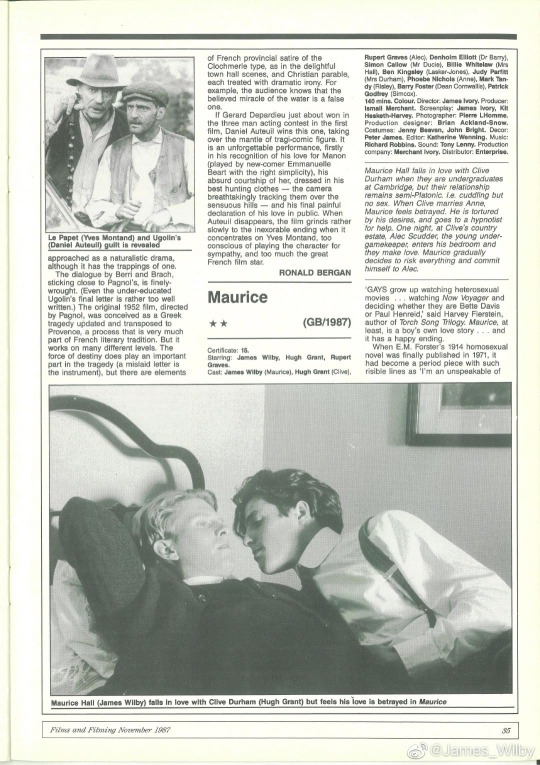

The November's Film and Filming in 1987.
Although the magazine selected Maurice as its cover, Maurice was only rated two stars in its Reviews colomn(4 stars: outstanding, 3 stars: very good, 2 stars: good or interesting, 1 star: poor, 0: dud) and was dissected by a critic named RONALD BERGAN, saying Maurice had become a period piece with such risible lines as I'm an unspeakable of the Oscar Wilde sort from the Eighties standpoint...and Ivory has been let down by his Jamesian (Forsterian?) lack of passion...
Maurice Hall falls in love with Clive Durham when they are undergraduates at Cambridge,but their relationship remains semi-Platonic. i.e. cuddling but no sex. When Clive marries Anne, Maurice feels betrayed. He is tortured by his desires, and goes to a hypnotist for help. One night, at Clive's country estate, Alec Scudder, the young under-gamekeeper, enters his bedroom and they make love. Maurice gradually decides to risk everything and commit himself to Alec.
‘GAYS grow up watching heterosexual movies ...watching Now Voyager and deciding whether they are Bette Davis or Paul Henreid.’ said Harvey Fierstein, author of Torch Song Trilogy. Maurice, at least, is a boy's own love story and it has a happy ending.
When E.M. Forster's 1914 homosexual novel was finally published in 1971, it had become a period piece with such risible lines as ' I'm an unspeakable of the Oscar Wilde sort? James lvory and his co-writer, Cambridge-educated Kit Hesketh-Harvey, have been more faithful to Forster than he was to himself, but the above quote is now cleverly seen at an ironic distance, from our Eighties standpoint. Earlier in the film, the Dean of Trinity (Barry Foster, nice and dry) implants the idea by commenting on the ‘unspeakable love of the Greeks, during a tutorial on the Symposium. Sadly, although gay fiction has moved on, attitudes have not changed drastically. An American hypnotist (Ben Kingsley) advises Maurice to go and live in another country where homosexuality is legal because, 'the English will never understand human nature: This line brought applause from the understanding English preview audience.
Again, as in Heat and Dust, Quartet and Room With a View, the non-English team of Merchant and lvory (this time without Ruth Prawer Jhabvala) have looked at English hypocrisy, and meticulously recreated a stiffly hierarchical society. Maurice is as literate, subtly intellectual, pretty and precious as we have come to expect from them, something to be grateful for when our screens are dominated by trashy teen pics. It certainly is the type of film that should do well in America where audiences prefer to have their images of England reinforced by seeing beautiful manners and manor houses (Brideshead re-revisited), gorgeous costumes and decor, and abundant servants. Ivory coasts in a rather leisurely academic style from one well-dressed, tasteful scene to another, sugaring the pill of sexual repression and class distinction. Pierre LHomme's sometimes murky photography, covers the period in a glow of nostalgia.
But there is another kind of nostalgia at work, as in Prick Up Your Ears, which looks back in envy at a pre-AIDS world, when one didn't have to stop to slip on a condom when the under-gamekeeper entered one's window at night and joined one in bed. The prole (played with slightly wavering accent by Rupert Graves) hovers around in the background for ages before he and Maurice make it together. Unfortunately, this key moment in the hero's sexual liberation comes across as a bit of groping under the blankets in the dark. Once again, as in Room With a View, Ivory has been let down by his Jamesian (Forsterian?) lack of passion.
Unlike the 'clone look' of today, moustaches denote respectability in the film. After his youthful fling with Maurice-lying on the grass in each other's arms and punting together- Clive (Hugh Grant,another actor in the upper-class Rupert Everett mould) grows a moustache, marries and becomes a Tory candidate. When Maurice enters the City as a stockbroker, he begins to sport blond hair on his upper lip. Once sexually freed, the moustache vanishes.
With or without facial hair, newcomer James Wilby (replacing Julian Sands after shooting began), physically of the James Fox sort, kept reminding me of lan Carmichael as the innocent, often called Windrush, in those Boulting brothers comedies of the late Fifties. Most of the pleasure derives from the cameo performances by Simon Callow, a bearded schoolmaster, Mark Tandy, a corruptor of youth, Patrick Godfrey, a knowing butler called Simcox, Peter Eyre, a prissy parson and, yes, naturally, Denholm Elliott.
RONALD BERGAN
97 notes
·
View notes
Text
Kiss My Scars
Kiss My Scars
https://ift.tt/sP95Shi
by NotSyrupsucks
“Your scar,” Cas said and Dean could taste every vibration of every syllable, “Let me remove it,”
Dean smiled against his skin, “No,”
“Why not?” Cas gasped as Dean moved his mouth to the column of his throat, thumbing at the waistband of his boxers.
“I like it,” Dean replied, “You know I like it,”
Or;
IM OBSESSED WITH DEAN'S HAND PRINT SCAR SO NOW HE IS TOO. And then Cas gets a scar, because they are madly in love.
Words: 1914, Chapters: 1/1, Language: English
Series: Part 2 of The timeline where Destiel is canon
Fandoms: Supernatural (TV 2005)
Rating: Teen And Up Audiences
Warnings: Creator Chose Not To Use Archive Warnings
Categories: M/M
Characters: Castiel (Supernatural), Dean Winchester
Relationships: Castiel/Dean Winchester
Additional Tags: Established Castiel/Dean Winchester, Castiel and Dean Winchester in Love, Castiel is Protective of Dean Winchester, Dean Winchester is Protective of Castiel, Men of Letters Bunker (Supernatural), Alternate Universe - Canon Divergence, Castiel has real Wings, why isnt that a tag, Idiots in Love, Boys In Love, Marriage Proposal, Fluff, Tooth-Rotting Fluff, No Angst, Comfort No Hurt, Lazy Mornings, Morning Kisses, this is just cute, the bunker has a fireplace now, Fireplaces, Dean Winchester is Good at Feelings, For the First Time in Forever, how did it get horny?, No Sex, Masochism, Sadomasochism, Scars, Dean winchester scar, Dean Winchester is Loved, Castiel is Loved (Supernatural), Happy Ending, Everything is happy, including the masochism, The Author Regrets Nothing, No Smut, Romance, Dean Winchester Says "I Love You", sorry i love this, Possessive Behavior, No Beta
via AO3 works tagged 'Castiel/Dean Winchester' https://ift.tt/YszfFa8
November 10, 2023 at 07:00PM
#IFTTT#AO3 works tagged 'Castiel/Dean Winchester'#Destiel#ao3feed#ao3feed Destiel#Destiel fanfic#Dean Winchester/Castiel#Castiel/Dean Winchester#Dean x Castiel#Castiel x Dean
7 notes
·
View notes
Text


Duncan Lacroix stands in front of a statue with the Beatles' song playing in the background, seemingly unaware of what type of statue it is. 🙄

This is the statue behind Duncan, Statue of Earl Roberts by Harry Bates, which is in Glasgow`s Kelvingrove Park, commemorates one of the most distinguished commanders of the British Empire, Field Marshal Lord Frederick Sleigh Roberts of Kandahar 1st Earl Roberts (1832 – 1914) and is an exact replica of the original which was unveiled in 1898 in Calcutta, India, to acknowledge his actions during the “Indian Rebellion,” 1857-1858 also known as the “Sepoy Mutiny”.
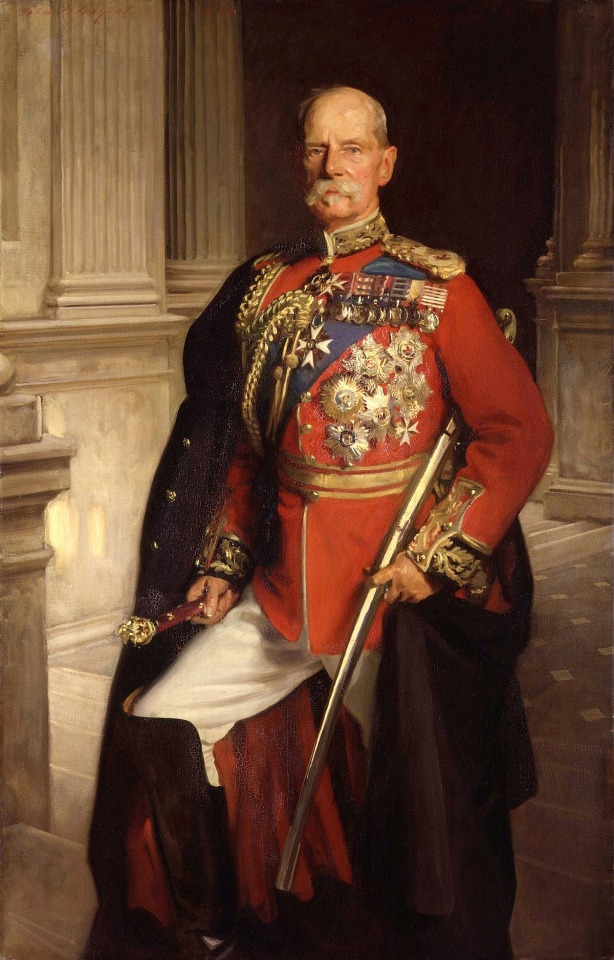
Field Marshal Frederick Sleigh Roberts (30 September 1832 – 14 November 1914) VC KG KP GCB OM GCSI GCIE KStJ PC was one of Britain’s most successful military commanders of the 19th century. British Victorian-era general born in Kanpur (Cawnpore) India served much of his military career there. Kanpur became one of the most important commercial and military stations of British India.
He won important victories during the Second Afghan War and revitalised the British campaign in the Boer War. He rose to Major-General during the Afghan war, 1878-80, and Commander-in-Chief in India, 1885-93.
A Field Marshal is the highest rank in the British Army. The rank of Field Marshal is never awarded except to a General who has commanded an army in war.
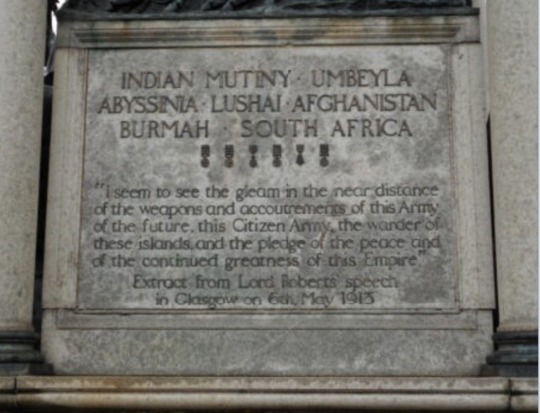
These are words from a recruiting speech given by Lord Roberts:
"I seem to see the gleam in the near distance of the weapons and accoutrements of this Army of the future, this Citizen Army, the wonder of these islands, and the pledge of the peace and of the continued greatness of this Empire" Extract from Lord Robert's speech in Glasgow on 6th May 1913.
Lord Roberts was the protagonist of a national military service and he visited Glasgow on the 5th of May 1913 as part of his duties to the National Service League and aimed to ‘rouse public interest to the necessity of a more adequate home defence.
The University of Glasgow decided confer his honorary degree upon him at a special ceremony, to coincide with Lord Roberts visit at this time. Professor James Moir, Dean of the Faculty of Law, presented Earl Roberts for the degree of Doctor of Laws at the Bute hall.

Lord Roberts died at the Front of pneumonia at St Omer, France while visiting Indian troops fighting the First World War. He was given a state funeral after lying in state at Westminster Hall (only one of two non-royal family members to do so in the 20th century, the other being Sir Winston Churchill) and was buried in St Paul's Cathedral.
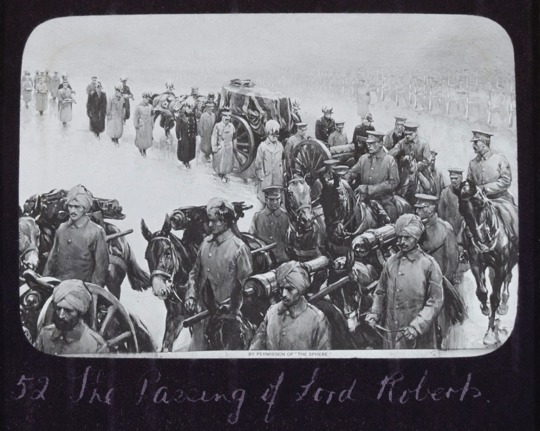
Indian troops preceding the coffin of Field Marshal Roberts, November 1914. From W. R. DEIGHTON, 4, GRAND HOTEL BUILDINGS, STRAND, LONDON, W.C.

#StatueofEarlRoberts #KelvingrovePark #Victorianera #LordFrederickSleighRoberts #RobertsofKandahar #1stEarlRoberts #replica #Calcutta #India #IndianRebellion #SepoyMutiny #commandersoftheBritishEmpire #Glasgow #FieldMarshal #General #Kanpur #Cawnpore #HarryBates #sculptor #StOmer #France #FirstWorldWar #Indiantroops #statefuneral #WestminsterHall #StPaul's Cathedral #lyinginstate
Posted 16th March 2024
4 notes
·
View notes
Text
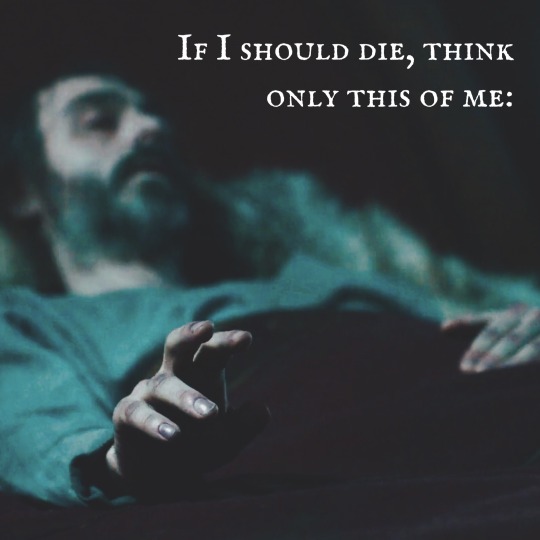

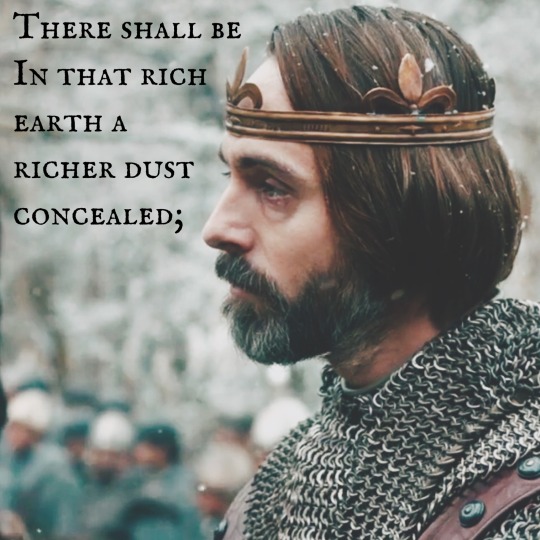
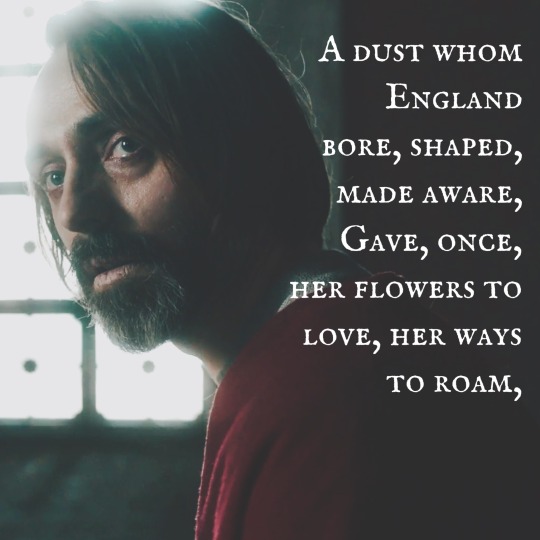
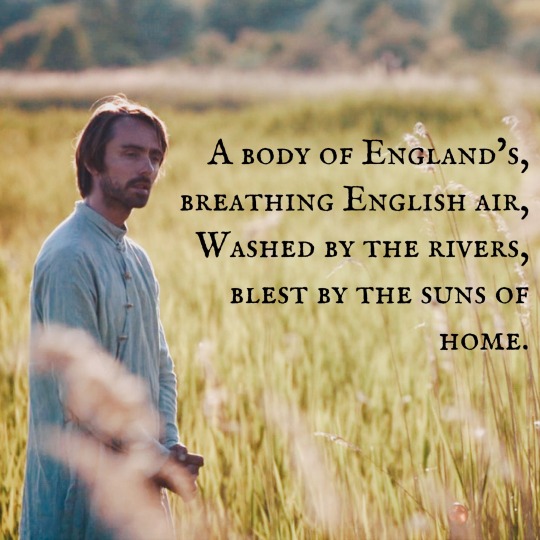
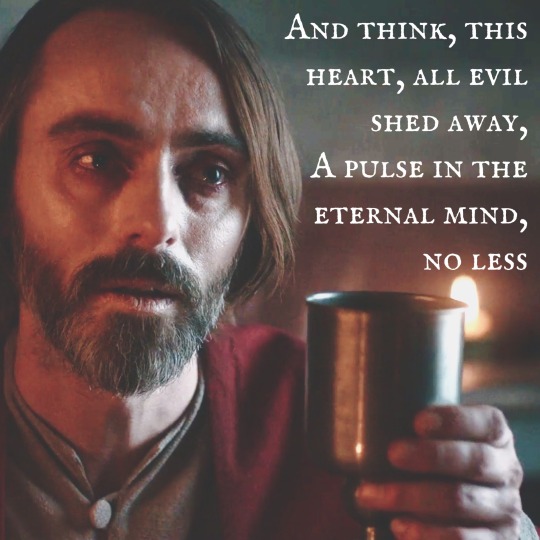
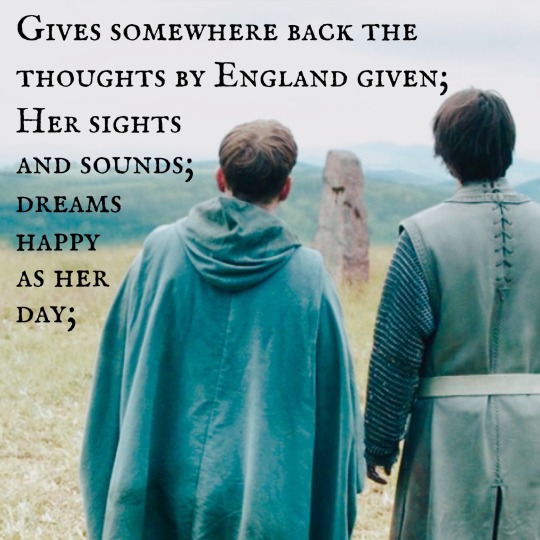


1914 V. The Soldier by Rupert Brooke
For the @tlkafterparty celebration
Prompt: inspired by poetry
@lauwrite1225 @morosemagick @solinarimoon @magravenwrites @93xdiagonxalley @trenko-heart @illjustgositinthecorner @blah-blah-blah-bla @medievalfangirl @persephones-journey @amuddleofnervouswords @anotherwinchesterfangirl @saint-helga @deans-ch-ch-cherrypie
#the last kingdom#tlkafterparty#tlk alfred#tlk alfred edit#tlk edit#thelastkingdomedit#inspired by poetry#long post
68 notes
·
View notes
Text
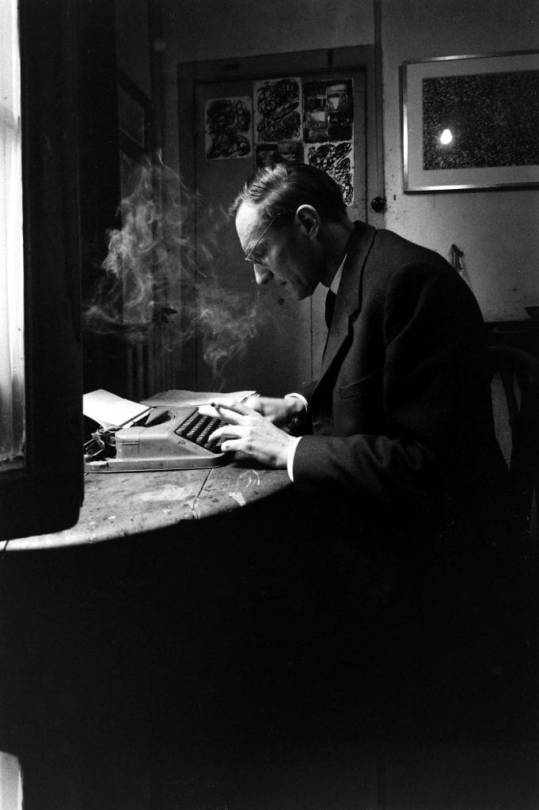
I am getting so far out one day I won't come back at all.
William S. Burroughs (February 5, 1914 – August 2, 1997)
Ph Loomis Dean, Life Pictures, Paris 1959.
6 notes
·
View notes
Text
scandalous figure: william desmond taylor - an analysis
“The dearest, sweetest little girl in the world was in love with me, and I'm old enough to be her father.” - William Desmond Taylor
One hundred years ago, Hollywood was stunned by the murder of Irish-born film director William Desmond Taylor. Arguably the most famous director in Hollywood in the early 20th century, Taylor was a Hollywood success story with a questionable past; his extraordinary journey brought him from a ranch in Kansas, to an antique shop in New York (abandoning his wife and daughter there in the process), to the gold mines of the Yukon, before finally arriving in Los Angeles at the emergence of the nascent movie industry. His wife and daughter had no idea where he was until one day, they went to the movies and he appeared onscreen while they sat flabbergasted in their seats. Taylor was known as a prolific womanizer, but it was his reported dalliances with men that people were most concerned about. Many who knew him characterized him as a prolific bisexual lothario. Gossip about gay orgies in opium dens still persists. However, that all came to an end one cold February night in 1922 when he was shot in the back and killed in his home. The murder of Taylor, 50 years old, became a nationwide scandal and proof to the nation’s moralists of Hollywood’s depravity. Two of the actresses linked to Taylor got caught up in the scandal and saw their film careers flounder following the murder. A century later, the killing of Taylor remains a mystery.

William Desmond Taylor, according to astrotheme, was a Taurus sun and Sagittarius moon (the moon is speculative). Born William Cunningham Deane Tanner in Carlow, Ireland, he was the son of a British Army officer and grew up in well to do surroundings of an Anglo-Irish life. In 1885 he attended Marlborough College in England but his adventurous spirit saw him take off the America in 1891. He would later change his name to William Desmond Taylor when he ventured to the US. When his sister died back in Ireland, Taylor received a small inheritance and with this he set himself up in New York. There he met actress Ethel May Hamilton and they married in 1901 and had one daughter. Taylor and his wife led a charmed life in the Big Apple. Taylor and his family were well known in New York society and were members of several clubs. He was also a heavy drinker, possibly suffered from depression, and was known to carry on affairs with women. In 1908 Taylor suddenly left his family and for a number of years traveled around the States and Canada with many people, including his wife, not knowing his whereabouts. Taylor made amends by making his abandoned daughter, Ethel Daisy, his heir.
In 1912, Taylor was finally tracked down in San Francisco and his wife was able to obtain a divorce from him. From San Francisco, Taylor made his way down the Californian coast to a little burgeoning place in Los Angeles called Hollywood. Taylor acted in a number of silent movies before going behind the camera from 1914 onwards. He would quickly become a much sought-after filmmaker in Hollywood and went on to make up to 60 films. His directorial debut was "The Judges Wife" and he followed that with a very popular 30 episode serial called "The Diamond from the Sky." Other notable films of Taylor's include "Davy Crockett," "Huckleberry Finn" and "Anne of Green Gables." In 1918, Taylor put his film making career on hold when he enlisted in the Canadian Expeditionary Force and was stationed in Dunkirk during the dying days of WWI. By 1919 he had reached the rank of Major and had served at Bergues, France. After the war Taylor returned to Hollywood and picked up where he left off making more hit films which starred the big names of the day such as Wallace Reid and Mary Pickford. Taylor would enjoy another few years of screen success before he entered his own final act.
the murder of William Desmond Taylor
It was February 1, 1922 and an unusually cold night for Los Angeles. Through their work together, Mabel Normand became one of William Desmond Taylor’s closest friends and confidants. Despite the fact that this was during prohibition, director William Desmond Taylor and silent film comedienne Mabel Normand enjoyed Orange Blossom Gin cocktails, discussed Nietzsche, Freud and movies. Mabel played comic riffs on the piano. At about 7:45 p.m. he walked her to her car leaving the door open or unlocked to his exclusive Alvarado Street bungalow. As her chauffeur drove off, they blew kisses at one another. With the exception of the murderer, Mabel Normand was the last person to see William Desmond Taylor alive. The next morning, Henry Peavey, the dead man’s valet, found Taylor's body. It’s likely he also placed the first call to the studio instead of the police. Someone shot Taylor in the back, between neck and shoulder, leaving him dead on the floor of his duplex at the Alvarado Court Apartments. There appeared to be no sign of a break-in or burglary, and cash was found in the house and on the body.
Soon word spread of Taylor's murder, which quickly drew a lot of people to the house, including a strange person who claimed to be a doctor examined the body and announced that Taylor’s death was because of a "stomach hemorrhage". A number of suspcts were investigated, inlcuding Normand, his valet Peavey, and a starlet named Mary Miles Minter. Minter was a popular child star who was groomed by Taylor. It was said that she was just three years older than Taylor’s biological daughter. During the investigation, they found love letters written by Minter to Taylor in his apartment. This brought to the conclusion that they had an ongoing sexual affair before his death. Based on her statement, it was revealed that her love for Taylor was one-sided as he explained himself to be old enough to be her father. There wasn’t enough evidence to prove that Minter was the killer.
On October 21, 1964, while still living in Hollywood, silent-film actress Margaret Gibson suffered a heart attack at her home. Sensing that she was dying, a highly distraught Gibson—a recently converted Roman Catholic—asked for a priest and then confessed to neighbors the February 1, 1922, murder of Hollywood film director William Desmond Taylor. However, all of the police files and physical evidence relating to Taylor's murder had disappeared by 1940, and aside from circumstantial evidence, no independent confirmation of Gibson's involvement in it has emerged.
Next, I’ll talk about the very beautiful and very pious actress he (allegedly) knocked up: Capricorn Mary Miles Minter.

Stats
birthdate: April 26, 1872*
*note*: due to the absence of a birth time, this analysis will be even more speculative
major planets:
Sun: Taurus
Moon: Sagittarius
Rising: unknown
Mercury: Taurus
Venus: Aries
Mars: Taurus
Midheaven: unknown
Jupiter: Cancer
Saturn: Capricorn
Uranus: Cancer
Neptune: Aries
Pluto: Taurus
Overall personality snapshot: He was torn between an instinct to roam free and a determination to find security and make a solid, lasting contribution to the world. As he repeatedly changed horses in search of both ultimate certainties and high-spirited adventure at the same time, he found himself deeply divided and uncertain. He sought to earth the fire from heaven and put it to work, but he found all too often that it would not let him rest. In his search for stability and security, he became a farmer and was immediately confronted with the changing seasons. He embraced the solid certainties of geology and was hit by an earthquake. He sought certitude and permanence, yet his endless inquiries constantly confounded yesterday’s certainties. When he got his own uncertainties together (by accepting he wanted the best of both the changing and the unchanging worlds), he was a brilliant teacher, conversationalist, counselor, entertainer, wit, creative artist and entrepreneur – in fact he could have anything he wanted. Once focused, he could be a human dynamo, and wonderfully humorous, witty and entertaining with it. As he discovered, his quest for solid material certainties did not make a happy bedfellow for his yearning for excitement and larger religious and spiritual understanding. In one way or another, be it through philosophy and the spiritual quest or through writing, music or art, he needed to put together and formulate a total vision of the universe which was based on unassailable facts yet satisfying to his idealism.
Constantly seeking, he was a natural agnostic, applying the criteria of science to counter woolly speculations, yet at the same time highly skeptical of the limited and statistical pronouncements of unthinking science. The danger, since he did not marry these elements within him, was that he swung from one to the other and undermined the virtues of both. A restless changing of jobs, careers, partners, visions or aspirations left him drunk with his own spinning. When you deliberately try to remain sober and commonsensical, it seemed to make matters worse for there was something of the gambler in him. This all-or-nothing streak temporarily overcame his natural caution and enabled him to burn his bridges (though he would usually ensure there is something tucked away for a rainy day). He felt an impulsive need to do things on a grand scale, to live with commitment, to feast on the world, and to understand what it was to be alive in all possible ways. He seemed called both to explore the reaches of the imagination and to build secure foundations. He brought far-reaching visions into manifestation, and these visions injected his conservative desire for stability and security with flair and colour. His vision of tomorrow and the larger world gave spice to any project he undertook. He saw endless possibilities and wanted to make them real. In this he could be the natural entrepreneur who saw economic opportunities at every turn, an inspiring counselor and teacher, and a stimulating companion whatever he did.
He was practical, steady and patient, but he could be inflexible in his views. One thing he did have was plenty of common sense and good powers of concentration, although he tended to think that purely abstract thought was a waste of time. His thought processes weren’t as quick as others, but his decisions were made with a lot of thought behind them. He needed love and emotion, and his sense of compassion led him to help others, as he was very protective. However he could sink down into the depths of self-pity at times, although normally he was of good humour. He didn’t react well to a hostile and competitive environment, in fact he preferred to stick to private endeavours where he could protect himself. He was quick to go on the defensive, rather than the offensive, when dealing with adversaries and adverse situations. He had a strong sense of purpose and was very sincere. Worldly success was well within his reach, because he possessed all the necessary talents to gain power, influence and status. He was practical, determined and patient. When there were hitches in his plans, he simply worked around them. He knew where he was heading to, and had already figured out the best way to use his talents to reach his goals.
He belonged to a generation that experienced a revolution in family and domestic life. As a member of Uranian Cancer generation, he could be unpredictable and changeable, but also original and imaginative. He was part of the ‘me’ generation which felt confined and limited by conventional roles and sought a more fulfilling and comfortable lifestyle, even at the expense of a stable family life, as was evidenced with Taylor leaving home relatively early in order to pursue his dreams and ideals, whilst still wishing to remain on friendly terms with his parents. He questioned long-held beliefs and ideals. He saw himself as a hero and would fight for his causes no matter the risks. He helped to bring avant-garde tastes to art and created radical changes. As a member of the Taurean Pluto generation, he valued material security, and was prepared to work solidly and steadily towards improving his material life. He was prepared to manipulate his environment, and he was seemingly never satisfied, always needing more and more.
Love/sex life: He was a competitive lover. He was always looking for a challenge in his love life even it was just trying to top his last encounter. Even though he had this luscious capacity for physical pleasure, he was never altogether satisfied with his sexuality. No matter what kind of sex he was getting, he found himself wanting more, or better, or maybe just different. This restlessness often disrupted him basically conservative approach to sex and led him into bad relationships and embarrassing situations. On the positive side, he was the Taurus Martian lover least likely to settle into a predictable, sensual rut in his love life. He was always ready for a new experience and wasn't afraid to take chances. He understood that the plodding search for sensation got boring after a while unless it was accompanied by an element of passion. This intense, even combative approach to desire made him an exciting, provocative lover who was often hard to satisfy but always worth the trouble.
minor asteroids and points:
North Node: Gemini
Lilith: Cancer
His North Node in Gemini dictated that he needed to prevent his idealism from influencing his thoughts to such a high degree. He needed to consciously develop a more clear-minded and analytical approach involving his thought processes. His Lilith in Cancer dictated that he was dangerously attracted to women who were too sensitive and resorted to nasty emotional manipulation, games, and pulled all sorts of shit to reclaim the power they felt they lost, as is evidenced in his association with Mary Miles Minter and her mother.
elemental dominance:
fire
earth
He was dynamic and passionate, with strong leadership ability. He generated enormous warmth and vibrancy. He was exciting to be around, because he was genuinely enthusiastic and usually friendly. However, he could either be harnessed into helpful energy or flame up and cause destruction. Ultimately, he chose the former. Confident and opinionated, he was fond of declarative statements such as “I will do this” or “It’s this way.” When out of control—usually because he was bored, or hadn’t been acknowledged—he was bossy, demanding, and even tyrannical. But at his best, his confidence and vision inspired others to conquer new territory in the world, in society, and in themselves. He was a practical, reliable man and could provide structure and protection. He was oriented toward practical experience and thought in terms doing rather than thinking, feeling, or imagining. Could be materialistic, unimaginative, and resistant to change. But at his best, he provided the practical resources, analysis, and leadership to make dreams come true.
modality dominance:
cardinal
He was happiest when he was doing anything new (in his case, it was beginning new partnerships), and he loved to begin new ventures. He enjoyed the challenge of claiming territory. He tended to be an initiator—and a bit territorial as well. Also, he had a tendency to start more things than he could possibly finish.
house dominants:
9th
10th
11th
Traveling, whether physically across the globe, on a mental plane or expanding through study was a major theme in his life. He was not only concerned with learning facts, but also wanted to understand the connections formed between them and the philosophies and concepts they stand for. His conscience, as well as foreign travel, people and places was also of paramount importance in his life, as is evidenced in his appeal and greater opportunities for more meaningful work outside of America. His ambition in relation to the outside world, the identity he wished to achieve in regard to the community at large, and his career aspirations were all themes that were emphasized throughout his life. All matters outside the home, his public image and reputation were very important to him. His attitude to people in authority, and how he viewed the outside world, as well as the influence of his mother and his own attitude to her was highlighted. Globally aware, he put emphasis on his friends and acquaintances, as well as the influence of groups and societies on his life. His general hopes and aspirations revealed themselves, as well as how well he functioned as part of a system. This extended to how he manifested his creativity against the background of the community.
planet dominants:
Mercury
Saturn
Jupiter
He was intelligent, mentally quick, and had excellent verbal acuity. He dealt in terms of logic and reasoning. It was likely that he was left-brained. He was restless, craved movement, newness, and the bright hope of undiscovered terrains. He believed in the fact that lessons in life were sometimes harsh, that structure and foundation was a great issue in his life, and he had to be taught through through experience what he needed in order to grow. He paid attention to limitations he had and had to learn the rules of the game in this physical reality. He tended to have a practical, prudent outlook. He also likely held rigid beliefs. He had luck, and believed in expansion, integration, and growth. He could also be excessive and lazy. He reached out beyond himself and expanded his consciousness. He loved travel, was fairly religious, and liked to integrate himself into the larger social order—church or religion, community, and corporation. He had intellectual and spiritual interests in the most.
sign dominants:
Taurus
Capricorn
Sagittarius
His stubbornness and determination kept his around for the long haul on any project or endeavour. He was incredibly patient, singular in his pursuit of goals, and determined to attain what he wanted. Although he lacked versatility, he compensated for it by enduring whatever he had to in order to get what he wanted. He enjoyed being surrounded by nice things. He liked fine art and music, and may have had considerable musical ability. He also had a talent for working with his hands—gardening, woodworking, and sculpting. He was a physically oriented individual who took pride in his body. He was a serious-minded person who often seemed aloof and tightly in control of his emotions and his personal domain. Even as a youngster, there was a mature air about him, as if he was born with a profound core that few outsiders ever see. He was easily impressed by outward signs of success, but was interested less in money than in the power that money represents. He was a true worker—industrious, efficient, and disciplined. His innate common sense gave his the ability to plan ahead and to work out practical ways of approaching goals. More often than not, he succeeded at whatever he set out to do. He possessed a quiet dignity that was unmistakable. He sought the truth, expressed it as he saw it—and didn’t care if anyone else agreed with him. He saw the large picture of any issue and couldn’t be bothered with the mundane details. His Sagittarian dominance dictated that he abandon his family to explore uncharted territories and new adventures. He was always outspoken and likely couldn’t understand why other people weren’t as candid. After all, what was there to hide?
Read more about him under the cut.
Born in Carlow, Ireland, William was the third child of British Army Major Deane-Tanner. Soon after, the family moved to Dublin. In his teens, he failed tests to enter the Army. Because of this, his father sent him to a reform school / working ranch in the American middle west. He later turned up in New York as an actor. On December 7, 1901, William Cunningham Deane-Tanner married Ethel May Harrison, the daughter of a New York stockbroker. He held the position of vice-president of the highly successful and well-known English Antique Shop in New York, allowing the couple to live in upscale Larchmont. He was well liked and popular with the people who knew him. Daughter Ethel Daisy was born in 1903. In 1908, he went to lunch and never returned. The next day he telephoned the shop to ask for $600, which he received by messenger, and he was never seen again. Rumors abounded that he was seen mining or acting in Colorado, Montana and Alaska, then going by the name William Desmond Taylor. Ethel divorced William, residence unknown, in 1912 to remarry. In December 1912, he showed up at Inceville, the city of motion picture sets Thomas H. Ince built along the ocean front near Santa Monica. He was hired to act in Counterfeiters (1914). Next Taylor showed up at Kay-Bee Studios production of The Iconoclast (1913) . Whenever there was a break in the filming, Taylor would spend his time studying and watching the various phases of the movie business or reading. Small talk with the other actors was not something that he did voluntarily.
When The Iconoclast (1913) completed filming, Taylor was offered another acting job and then offered a chance to direct. In the early days, it was cheaper to hire an actor that could direct the movie than to hire two men to do the same thing. William S. Hart did the same thing for Triangle Pictures. Taylor continued acting, directing or both until he was hired as an actor in A Tale of Two Cities (1917). He became invaluable to the director when his knowledge of art and literature became known. Thereafter, he rapidly climbed the ladder of success and became the leading director of Famous Players-Lasky. Taylor directed Dustin Farnum, George Beban, Kathlyn Williams, Constance Talmadge and other stars with great success, and was asked to direct versions of both Tom Sawyer (1917) and Huckleberry Finn (1920). With sudden riches, adulation, and fame, women became very interested in him, and as a handsome and charming director, he was in a position to help them. Like many directors who turned out a large number of films, some of his films like Ben Blair (1916) were poorly received; some like The Last Chapter (1914) were average at best; and others such as The American Beauty (1916) were very well received. In How Could You, Jean? (1918) Taylor directed Mary Pickford. With World War I raging in Europe, at age 41, Taylor enlisted in the Canadian Army in July 1918, but the war would end before Taylor could be sent to France. Instead he served in the Army until he was discharged in the summer of 1919. He returned to direct the well-received Anne of Green Gables (1919). One of his last projects would be to direct Betty Compson in The Green Temptation (1922).
In the early morning hours of February 2, 1922 Taylor was found shot to death in his bungalow. His still-unsolved murder was one of Hollywood's first major scandals. From what the police could piece together, at 7:00 pm, Taylor returned a telephone call to actor Antonio Moreno at the L.A. Athletic Club. At 7:05 pm, close friend and actress Mabel Normand arrived at his door. She left at about 7:45 pm, with Taylor walking her to her car, according to witnesses. According to one theory, Taylor was shot in the left side with a single bullet shortly after her departure by an unknown assailant. Others put the murder sometime between 1-2 am based on lack of rigor mortis when his servant arrived at approximately 7:45 the next morning to discover the body. Studio officials were first on the scene and are alleged to have removed key evidence long before the police and coroner arrived to begin investigation and secure the murder scene.
The list of suspects included the A-list in Hollywood and rumors of payoffs and cover-ups quickly spread. Reports of finding some of Mary Miles Minter's personal belongings (including a monogrammed negligee) in his bungalow and her being suspected of the murder effectually ended her career in pictures. Minter's mother, Charlotte Shelby was another suspect in the murder. Mabel Normand's career would be tarnished by her association and questionable motivation in the death of Taylor. Other theories involved drug dealers who were angered by Taylor's attempts to get Normand free of drugs. Many actresses, in later years, would make deathbed confessions of being the true murderer of Taylor.
Taylor's funeral was one of the most impressive held in Los Angeles up to that date. Virtually everyone of prominence in the motion picture industry was in attendance. (x)
4 notes
·
View notes
Text
Birthdays 3.1
Beer Birthdays
Regina Wauters (1795)
Anthony Durkin (1831)
Adam Sander (1832)
Charles Weyand (1869)
Danny Williams (1959)
Five Favorite Birthdays
Frederic Chopin; composer (1810)
Robert Conrad; actor (1935)
Roger Daltrey; rock singer (1944)
Glenn Miller; jazz trombonist, bandleader (1904)
David Niven; actor (1910)
Famous Birthdays
Catherine Bach; actor (1954)
Javier Bardem; actor (1969)
Nevada Barr; writer (1952)
Warren Beatty; actor (1937)
Harry Belafonte; singer (1927)
Dirk Benedict; actor (1945)
Sandro Botticelli; Italian artist (1445)
Basil Bunting; English writer (1900)
Harry Caray; sportscaster (1914)
Timothy Daly; actor (1956)
Ralph Ellison; writer (1914)
Lawrence Ferlinghetti; beat poet (1919)
William Gaines; publisher, "MAD magazine" (1922)
Ron Howard; film director, actor (1954)
William Dean Howells; writer (1837)
Nik Kershaw; singer (1958)
Oskar Kokoschka; Austrian artist (1886)
Robert Lowell; poet, writer (1917)
Dave Marsh; music critic (1950)
Martial; Roman poet (40 C.E.)
Moses; religious leader (1560 B.C.E.)
Howard Nemerov; writer (1920)
Romulus; founder of Rome (1752 B.C.E.)
Judith Rossner; writer (1935)
Pete Rozelle; NFL commissioner (1926)
Augustus Saint-Gaudens; sculptor (1848)
Deke Slayton; astronaut, chief of flight operations (1924)
Alan Thicke; actor (1947)
Richard Wilbur; poet (1921)
Lana Wood; actor (1946)
1 note
·
View note
Photo
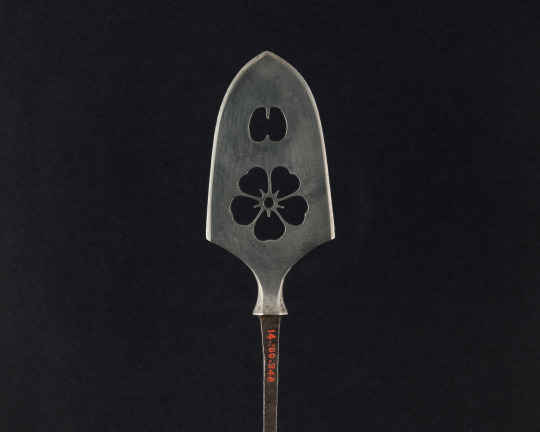
Arrowhead (Yanone). 13th–18th century. Credit line: Gift of Bashford Dean, 1914 https://www.metmuseum.org/art/collection/search/22552
#aesthetic#art#abstract art#art museum#art history#The Metropolitan Museum of Art#museum#museum photography#museum aesthetic#dark academia
10 notes
·
View notes
Photo

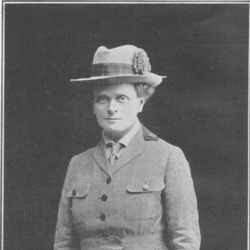


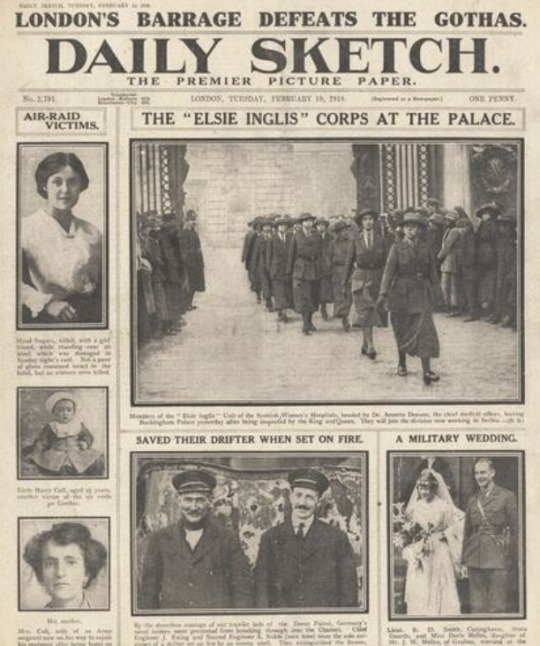

On 26th November 1917 Elsie Inglis, the Scottish nursing pioneer and suffragette, died.
There are very few people who were neither born or died in Scotland that are as highly regarded and respected as Scots, than Elsie Inglis, the only other that springs to mind is Eric Liddell.
Elsie parents were Scots Harriet Lowes Thompson and John Inglis, who worked for the East India Company, when her father retired from his job in 1878 the Inglis family returned to Scotland and settled in Edinburgh.
Having studied medicine at the Edinburgh School of Medicine for Women Inglis subsequently established her own medical college. She qualified as a doctor and secured a teaching appointment at the New Hospital for Women. A keen suffragette Inglis was later to found her own maternity hospital entirely staffed by women.
In 1906 Inglis played a notable role in the establishment of the Scottish Women’s Suffrage Federation. The outbreak of war in Europe in August 1914 brought about a temporary ceasefire where political - including suffragette - issues were concerned, and Inglis promptly suggested the creation of women’s medical units on the Western Front.
The British government reacted to Inglis’s idea was frowned upon, she was told “‘my good lady, go home and sit still’. . Nevertheless a similar offer made directly to the French government was warmly received and Inglis travelled to France within three months of the outbreak of war, with the Abbaye de Royaumont hospital, containing some 200 beds, in place by December 1914. This was later followed by a second hospital at Villers Cotterets in 1917.
Inglis was active in arranging for the despatch of women’s units to other fighting areas aside from the Western Front, the first Scottish Women’s Hospital field unit was formed in December 1914 in a town called Kragujevac in Serbia.others followed at Salonika, Romania, Malta and Corsica in 1915 and to Russia the following year.
Inglis herself served in Serbia from 1915 until the Serbian government and army withdrew to Corfu ,she had been held prisoner for a period until U.S. diplomatic pressure brought about her release. Thereafter based in Russia she was taken ill, the government demanded she come home but Elsie refused until the Serbian soldiers were guaranteed safe passage. The boat brought them back to Newcastle and Elsie, who was crippled with illness, could hardly walk as she greeted Serbian soldiers on deck. She was so frail she had to be carried off to a nearby hotel where she died on 26th November 1917.
Elsie’s body was taken “home” to Edinburgh where it was interned in Dean Cemetery, beforehand it lay in state in St Giles’ Cathedral. Her funeral there on 29th November was attended by both British and Serbian royalty.
The SWH continued its work for the duration of the war, sending out more units and raising money for the work. Remaining funds were used to establish the Elsie Inglis Memorial Maternity Hospital in Edinburgh in July 1925, it closed in 1988.
There is a Memorial Drinking Fountain “Crkvenac” in Mladenovac, Serbia commemorating her work for the country. A plaque commemorates her at 8 Walker Street, Edinburgh. A portrait of her is included in the mural of heroic women by Walter P. Starmer at St Jude’s Church, Hampstead Garden, London. In 1922 a large tablet to her memory (sculpted by Pilkington Jackson) was erected in the north aisle of St Giles on Edinburgh’s Royal Mile.
A movie is set to be made of her biography, penned by her sister, Eva called The Woman With the Torch, no date yet about a release, work is ongoing as far as I can see,
Edinburgh is set to have a statue erected to Elsie, it will be the first woman to be commemorated with a statue on the Royal Mile at the site of her hospice on the High Street, which is between the Bridges and The Netherbow. Unfortunately controversy has meant it has been put on hold after a bitter row about the choice of sculptor.
Anger erupted after the trustees suspended their open call for designs and instead commissioned Stoddart, the King’s sculptor in ordinary in Scotland.
In late September, they tweeted: “The call to artists has been suspended indefinitely owing to considerations that have been brought to the attention of the trustees in recent weeks. This information has therefore rendered the brief as published suboptimal to ensure the successful outcome of the project at design scheduling and budgetary levels.”
The furore has brought fresh attention to the absence of female statuary in Edinburgh, which has dozens of monuments to male soldiers, kings, intellectuals and physicians. Those include one of Stoddart’s best-known works, a large bronze of the philosopher David Hume outside the high court near St Giles’.
Part of the problem is that some say the statue should be made by a woman, and I agree, why should a woman not get to make a a statue about a woman who did a lot for their rights. Edinburgh should be making a stand on this.
#Scotland#scottish#history#medical history#sufferagette#womens suffrage#strong woman#doctor#Edinburgh
18 notes
·
View notes
Text
Suptober 2022 Day 1 - Maze
Finally I got my very first fiction in the Destiel/Supernatural fandom written and posted. It’s called The Blue Lady and lives on AO3, but I’m going to put it here too.
Suptober Day 1 - Maze
The Blue Lady
Dean and Cas are just chillin’ in their Kansas City Shirtwaist style home kitchen waiting on supper. Now that they’ve finally used their words and Dean has stopped the ever present voices from the past, he and Cas moved out of the bunker into one of Kansas City, Missouri’s southern neighborhoods. The three story home is a fixer-upper, but with good bones and built in the early 20th century. The new husbands are slowly making it their own, while still keeping their hands in the hunting community. It is definitely a boon to have an angel as a husband, mate, lover, and hunting partner.
Jack powered Cas up again after becoming God. Using the grace Dean already had, Jack gifted him with some qualities of an angel’s mate like a longer lifespan, the ability to be more sensitive to the different planes around him, faster healing, and Dean’s favorite, seeing his gorgeous husband’s massive wings anytime he wants. The couple choose to live a normal, mostly human, life knowing that when the time comes they will go to Heaven together reuniting with everyone at the Roadhouse until the end of time.
Sitting at the counter on his favorite stool Cas looks up from the laptop to tilt his head with that thoughtful look Dean loves so much. Seeing that something catches his love’s attention, Dean asks, “What did you find?”
Cas looks up, “I found some information on a salt and burn in a downtown historic hotel.” He lays out the story of the Marriott Muehlebach while Dean is cooking supper. Dean stands at the island chopping vegetables to make a stew since it is the beginning of fall and crisp evenings. Since his hands were occupied, Dean listens and occasionally looks over at Cas while he begins telling the facts and stories he’s found. Cas reads from several organizations, blogs, and online collections, “The original Muehlebach hotel was built in 1914-1915 over the destroyed remains of the original Kansas City First Baptist Church.”
“Over a church, huh.” Dean retorts.
Cas raises his eyebrow at Dean and continues unrattled, “The Muehlebachs, who emigrated from Switzerland prior to 1859, made their money in the Beer and Brewery business, going back to 1868. The Muehlebach hotel was 12 stories and held 500 rooms. It was the jewel of hospitality and opulence in Kansas City’s crown until the late 1960s when it was sold several times over the decades.”
As the stew goes on the stove to cook for several hours, Dean glances at Cas, who is completely absorbed by all the information he’s reading. Launching into another exposition, the angel conveys, “Starting in 1922 the hotel started broadcasting the first regular radio program that could eventually be heard nation-wide and overseas. It was the brainchild of Carleton Coon and Joe Sanders, two employees. They formed the Coon-Sanders Nighthawk Orchestra, eventually becoming a famous jazz band.”
Dean interrupts this history lesson asserting, “The members of that original Baptist church can’t be happy about their space being used by descendents of immigrants, making a fortune from beer, plus employees becoming famous musicians. Their prim and proper attitudes must be making them roll over in their graves or being our unhappy, not wanted guests.”
Cas, ever the professor type, drones on, “Only the best were hired to work at the hotel in public positions. It’s said that even the waiters could speak multiple languages.”
“So you’re telling me that the people who worked there were The Shit during the heyday of the hotel,” chimes in Dean.
Cas rolls his eyes. “It was also called the White House of the West. Harry Truman worked out of the Presidential Suite,” continued Cas, expecting to keep telling the hotel’s unique story.
“Let me see that,” Dean is very tired of listening to Cas do the research and turns the laptop toward him. “All these fucking facts and I still don’t understand who our salt and burn is from this hoity-toity palace.” Dean scans the page, seeing all the black and white facts Cas was reading through, then his eyes landed on the words, “The Legend of the Blue Lady.”
“Bingo!” hollered Dean as if he’d won the lottery. After all that droll, dry exposition he found the ghost and backstory in just a quick scan. “Ok Cas, you went on for over an hour, talking through dinner, washing the dishes, and cleaning up the kitchen. Why in the hell didn’t you just get to the point?” he asked, exasperated.
“I was quite enjoying myself. I didn’t think you’d mind the facts before we got to the unsettled spirit,” Cas replies, quite pragmatically, again with the cute bird tilt of his head and furrowed brow because he truly doesn’t understand Dean’s frustration. Moving on, Dean starts to read the info they really need. This salt and burn is needed because the ghost is getting more agitated as the appearances continue.
“ ‘The Legend of the Blue Lady’ apparently has been around for decades,” Dean reads from the info relating to the Salt and Burn. “She appears as a blonde woman, 30ish, in a blue dress styled like that of the 1920s.”
“Another distinct feature is the wide-brimmed hat she wears with her hair tucked up in it.” Cas contributes, reading over Dean’s shoulder, “She is said to have stayed at the hotel from time to time. She was also thought to be an actress from the Gayety Theater that was next door in the early half of the century. It is suggested that she is searching the Muehlebach hotel and grounds for her lost love.”
“This is interesting,” Dean pokes at the screen, “in 1952 the Muehlebach hotel under the direction of its current manager, Barney Allis, expanded the hotel over the demolished Gayety theater.”
“I hate romantic ghost stories. Something always goes sideways.” Dean complains after hearing what their simple salt and burn was turning into. “Do you have any other ideas or leads Cas?”
Cas shakes his head, but then puts his finger to his lips and adds, “What if it’s not a lover our Blue Lady is looking for. What if she’s unhappy with the management of the hotel for expanding over her beloved theater?”
“Now that’s an interesting theory,” Dean holds his hands out in front of him as if he can’t decide between the two. Over the next several days the men research both options using whatever history on the Gayety and Muehlebach is available.
“Turns out the Meuhlebach is a complex now. It changed hands many times.” Dean says out into the ether. “Wow, I’m done. We’ve spent days figuring out where the original hotel and first addition was exactly.” Dean was irritably complaining to Cas how long it was taking to look for this lady ghost, who may or may not have two reasons to make a fuss.
Now it was time to plan how to get into the oldest part of the hotel, deep inside a very large and very popular conference center. One thing they had to keep in mind was that the original hotel doors were kept locked. That little nugget figured heavily into the upcoming plans.
While Dean was looking into the hotel, Cas turned his focus to the Gayety Theater and who the Blue Lady could be. It was clear that after Barney Allis bought the Muehlebach in 1931, the hotel was run more like a military boot camp.
“Did you know that Allis held surprise inspections for staff to ensure perfection,” Cas turns to Dean. “He was known to rip an offending garment off an elevator operator because a button was tarnished or the jacket was not pressed correctly.” Cas looks curiously at Dean and asks, “What is a ‘Napoleon Complex?’ Allis was accused of it many times.”
Dean laughs, “Remember Zachy-Boy? That’s a Napoleon Complex, except he wasn’t short. I think Gabriel would be a better example when he was being a complete pain in the ass.” Now it was Dean’s turn to have a lightbulb moment, “What if Allis upset our actress with his douchey self and she lost her job?”
Cas lifts his eyebrow and nods at his husband.
“Two city blocks,” Dean says.
They stand in front of the main hotel. Dean shakes his head, a little intimidated at the amount of ground to cover.
“Plus the maze of alleys between the different buildings,” he sighs. “If we can get into some of the old hallways and guest rooms in the original hotel, maybe we’ll find something to solve this little mystery.”
“Dean, please tell me you have a plan to get from point A to point B?” Cas looks at his husband with the usual fear that he will ‘shoot first and ask questions later.’ Even being a powered up angel again didn’t stop Cas from worrying they would end up in the deep end of the pool without knowing it.
They load up Baby late in the day and before they got in the car Dean pushed Cas up against the gleaming metal and proceeded to kiss him deeply as a solid reminder they were in this together. Finally, they took their familiar positions, Dean driving and Cas riding shotgun.
Driving downtown in the evening, Dean absolutely doesn’t want anyone to ding Baby so they park at Barney Allis Plaza with plenty of space for the number one girl in the family. When they leave the Impala, and are finally up on ground level again Cas looks around at the fountains, greenery, park space and says mostly to himself, “This Barney Allis gentleman must have been good for the city if he has all this named after him.”
“I even found a fact about Allis you might not know, Cas,” Dean smirks, “Allis said not to die in a hotel you own. He sold the Muehlebach property in 1962 and then died three months later on the sidewalk in front of the Aladdin Hotel, which is just there,” Dean points, “Across the street from this parking garage, park combo.”
Even after seeing the complex on the maps and photos, the Marriott properties are impressive. Cas and Dean pat their pockets, reassuring themselves that they had their trusty weapons for dealing with a ghost.
Dean stands ramrod straight, his face taking on that “determined hunter” look.
“Remember Dean, we're supposed to fit in like we’re patrons.” Cas says gently.
“Duh Cas, I haven’t forgotten about that part of the plan.” Dean snaps, but relaxes.
A little.
Once past the lobby, Dean tries to figure out the maze they are working in. Once they get into the original hotel it will be more difficult to pose as guests. Thankfully there are sections available for banquets and conferences so they won’t look completely out of place.
“I feel like a mouse in a maze trying to figure out which hallway to go down or maneuvering to avoid staff.” Dean grumbles.
Calm as always, Cas recites, “This addition was put on property of the Gayety Theater. It was demolished in 1950 for the 1952 addition of the Muehlebach Towers. That building was torn down in 1996 to make the building we are in now.”
Dean ignores Cas, needing to focus on the now. He doesn’t care that he is in a building built in 1996, long after the Blue Lady died, and all traces of anything from her time had been obliterated over the decades. He tries to give off a sense of confidence as they slowly start moving through the building.
“I think we go around this way to get to the old Muehlebach.” Dean says, trying to sound more certain than he feels. It looks like a piece of cake to find the old hotel’s event spaces. The two walk slowly down seemingly endless hallways.
“Look Dean, I know this style of architecture. I remember watching buildings being built like this. It’s called Beau Arts and really appears opulent. We’re on the right path to the oldest part of the hotel.” Cas says happily.
They descend a set of stairs and the past unfolds in front of them: mosaic floor, thick wooden counters, the glint of floral and geometric brass trimmings on every fixture. Cas thinks back to when these details were not revival styles, but the real thing. “I really enjoy interacting with humanity, rather than watching,” he mutters under breath.
“Cas look at that! The front desk still has the original room key holder. It didn’t look like much in the photos, but 500 room key slots is cool.” Dean turns in a slow circle, “I don’t think I’ve seen so much brass in one place. I don’t know architectural styles for shit, but this is really fuckin’ amazing.” Dean breathes to re-ground himself. “I’ve never seen anything like it in person. A big brass mailbox –”
“‘Letter box,” Cas corrects him. Dean ignores it.
“...a bronze water fountain with a natural design inside it that still works, and these mosaic floors,” Dean swings his arm in a broad gesture, “Make me feel like I’m in Rome or Greece.”
“You don’t need to know architecture to appreciate it, Dean. It seems we found where we are starting this labyrinthian hunt.” Cas says casually. “This is the old part of the hotel. We need to disappear into the non-public places.” Of course the Blue Lady might be out in the public today, but if they can find an area she likes to frequent so much the better.
“Cas, can you feel her at all? Any left over impressions?” Dean asks, hoping to get a better read on the place.
“None, There has been so much activity in this block that actually I’m feeling quite overwhelmed by the sensations.” Cas replies. Dean hangs his head. He was really hoping Cas could help out here. Who knew that angel senses could get lost in ethereal static leftovers?
“Alrighty then, up we go. As much as I want to stay in the public places, she’s not going to be here. Start looking for the stairs, sweetheart,” Dean calls over his shoulder walking away. “We have 500 rooms and hallways to walk through, staircases to climb.” Dean scoffs, “Hamster…maze…again.”
“Dean, you are not a hamster, beloved, maybe a squirrel or guinea pig. Guinea pigs are cute and smart.”
“Fuck you, Cas.” Dean laughs heartily. “Start walking you freakin’ angel.”
At the end of the hallway Cas sees a door with a rusted sign that says
Stairs
“Stairs,” he supplies helpfully
“Oh joy, and only 12 stories to check.” Dean says in his hunter voice.
Four hours of searching later, Dean leads the way down the fifth floor hallway, his eyes pausing on every door. The room numbers are tarnished but still legible.
“They completely emptied this place out,” Dean muses. “Didn’t even leave the light fixtures.”
Dean stops suddenly. “Babe, come here.”
“512,” Cas reads. “I am feeling a sense of unease. It is a female, but I’m not sure if the energy is anger though.” Cocking his head, Cas continues, “I feel that it’s more of a sense of longing and frustration.” He puts his hand on the door, fingers spread. “Definitely something in this room.”
“Fuckin’ A, let’s get in there and see what we find.” Dean remarks with more emotion than since they started working the maze of floors and hallways. “All the furnishings are gone, wires hanging off the walls. Let’s see if it is holding any secrets.” Dean looks at Cas and begins his search.
Cas catches a glimpse of blue in the detritus left in a corner. “Hey beloved, look over here,” Cas carefully picks up the fabric and closes his eyes. After a moment of concentration, he says, “It’s her’s. Our Blue Lady stayed in this room at least once and left a part of her clothing behind.” The fabric is torn and very old.
“Okay pragmatic one, let’s assume you’re right, we got our location. Odd though we still haven’t seen any manifestation of our girl.”
Dean takes the cloth delicately. As if conjured by the material a soft, plaintive sob is heard. “Great, I had to go and say something, Moaning Myrtle is in the house.” Dean sighs.
“I don’t get a vengeful feeling from our ghost. I feel she’s tired. She took out her anger decades ago, but now can’t rest.” Cas says, zeroing in on the emotions in the room.
“I guess those angel senses are finally switching on,” says Dean sarcastically. “I’m glad this isn’t a physical hunt so far, except for a lot of walking. I’m not as young as I used to be.” His knees crack as he kneels down to examine something. Still not understanding how humans perceive time, Cas gazes at his husband, trying to see the differences from just a few years.
“Hey, look down here. What is this, something paper?” Dean grabs Cas’ attention. He slips the tip of his knife behind the top edge of the baseboard and pulls, revealing a photograph. Cas reaches in quickly and retrieves it.
“Beloved, I think you found our Blue Lady.” Cas turns it and reads text on the back. “This was taken by Orval Hixon, one of the most prominent photographers of performers in the early part of the 20th century in Kansas City.” Cas says. Dean glances down at the floor with a twinkle in his eye remembering that his angel can’t not infuse his speech with facts. One of the many reasons he’s glad he got his head out of his ass and allows himself to love the man fully and completely.
Dean looks at the photo with the decorative paperboard frame protecting the edges of the original photo adhered to a stiff backing. “Cas, you did most of the research on the Gayety Theater and the Blue Lady, does this look anything like her from the descriptions you read.” Dean asks. “I mean, every color looks gray, so…”
“Actually yes. Look close at the pattern on her dress, it’s the same as on the cloth I found. Here’s what we know: the woman in this photo has light hair like in the stories, she’s holding a wide brimmed hat, and she’s dressed like the 1920s. It all matches.”
Cas frowns. “Does she look pleased or happy to you, beloved?” Cas has to admit to himself he really doesn’t have a good grip of normal facial cues.
“She does look pleasant,” Dean murmurs as he turns the photograph over and reads for himself. The penciled letters are faint and barely legible. “Score! Our girl is named Minnie Lantry and it is a publicity photo. I can’t read the rest…”
With his angel’s eyes, Cas reads, “Minnie Lantry. Actress, Dancer, Singer. Currently employed at the Gayety Theater. 1926 taken by Orval Hixton.” In a different and more delicate hand is written, “This is my favorite blue dress and hat. I hope this gets me even more jobs.” Cas turns the photograph to examine it at different angles. “There isn’t any other identifying information.”
The plaintive voice changes as Cas reads, sounding calmer, no longer moaning. It’s as if a precious item was found.
“So many of the theaters were destroyed in the name of profits and business. I can see why Minnie was upset and frustrated with people like Barney Allis for tearing down the entertainment establishments.” Cas looks into Dean’s face. “I’m convinced that it wasn't a lover that the Blue Lady is searching for.”
Dean nods. “The facts are pointing to our douche with the Small Man Complex as the one who caused Minnie’s sorrow and frustration. Both emotions are extremely powerful and could keep a soul here on earth.” He turns toward the door, relieved to be leaving.
“Okay we have all we need from here. Now it’s time to figure out where Miss Minnie is buried so we can burn her bones and give her rest.”
Cas stops him, saying, “Love, please give me the cloth and the photograph. I need to put them in an appropriately warded container so we aren’t taking any chances with possible cursed objects while we research where Ms. Lantry is buried.” Dean nods and hands over the objects.
Back in the lobby, Dean expresses his amazement with the wealth built into the hotel. “I still can’t get over the amount of marble and brass they used. Even the drinking fountains were solid brass.” Light from above draws Dean’s attention to the intricate chandeliers that make the fixtures in his home look so small.
“It’s quite unique that this original hotel was built in just one year, for 2 million dollars and without electricity, or other modern conveniences.” Cas asserts calmly, putting a hand on Dean’s left shoulder. “You needn’t run. Act casual”
“The faster we are driving home the happier I’ll be,” Dean grouses.
For the next couple of days Cas enjoys himself looking into the historic cemeteries in Kansas City.
“Dean, I’ve found her. Minnie Lantry is buried in Elmwood Cemetery. I have a general idea where she is. When do you want to salt and burn her and the photo and cloth?”
“How about tomorrow since it’s a weekday and we probably won’t run into anyone.” Dean replies, looking at the laptop over Cas’ shoulder. “How do we get there?”
“East on…” Cas traces with his finger, “Truman Road. Right there.”
Late the next night, Dean parks Baby on a side street across from the cemetery gates.
“Locked.” Cas needlessly informs Dean.
“Uh-huh. Guess it’s over the fence,” Dean sighs to Cas, “I wish you could still fly us places, I really don’t like wrought iron fences with pointy bits on top.”
Dean checks his inventory of tools: shovel, salt, gasoline, warded container, flashlights, matches, and the two climb the fence.
Looking at a pencil sketch of the roads, Cas points a direction and they begin walking.
“Beloved,” Cas begins, “did you know that this cemetery is the second oldest in the city, founded in 1872. Many notable Kansas Citians are buried here, including –”
Dean interrupts the monologue before Cas can get a good head of steam. “Babe, I know you love facts, but I want to find Minnie. I’m chilly, carrying fifty pounds or so of office supplies, not sure how far I’m walking tonight and I want to get this burn over with. From what I remember of the map online, these graves are packed in here.”
They pause at an intersection. Cas apologizes,” I tried to narrow down where Minnie was in this forty-three acre cemetery. I think you would refer to this as a ‘Find-a-Grave Fail’ since I couldn’t find the specific place.”
“A lot of walking,” Dean shrugs. “What’re you gonna do?”
After a while, Cas begins to lag behind. There are presences clamoring for his attention.
“These mausoleums are The Shit,” Dean says loudly, regaining Cas’ attention. “Hey Cas, I found Waldo!” Dean laughs, pointing at a carved name.
Cas catches up, chuckling at the Waldo reference, having enough children’s books that he gets this joke, at least. “Dean, this cemetery is very unsettled. So many souls are not at rest.”
“We can’t salt and burn the entire place. Come on, let’s check this first place you marked.” Dean rejoins. “At least we’re walking a road and not a hillside filled with mole-holes.”
They walk in silence for a while, each noticing in his own way the differences between memorials. “There’s a huge, ornate mausoleum,” Cas says, then points to a shape barely visible in the dark, “And that’s just a rock with a name. It fascinates me how you humans obsess about permanence in so many different ways.”
“It’s all about the money, for all the good it does them after they’re just bones.”
Cass stops and says, “We’re here. First one.”
“Good, I was about to ask you ‘how much longer’ “ Dean replies tiredly. “I’m just not in fighting shape anymore since we don’t hunt as much.” After another quarter mile Dean says surprised, “Do you see the building built into the hillside and the tall, old maple tree?”
“That’s how I marked this area for Minnie. It’s an older spot in the cemetery with graves from the late 19th Century up through the time frame we’re looking for. The main landmark I focused on is the sandstone building. Being built into the hillside like that, and its size, it’s very possible this could have been a temporary internment vault when the weather was too inclement to bury someone.” Cas affirms.
It is Dean’s turn to be thoughtful. Gratefully, he puts down the supplies and considers the building. “Interesting idea Cas. It’s entirely stone built into the hillside. With all the arches sealed up, do you think it’s used at all anymore?” Dean considers. “You’ve got iron gates padlocked shut over plywood doors there,” he points. “Shed doors there. The others are just filled up with stones. Looks like someone has found their way in,” Dean murmurs, pointing at a person-sized hole in one arch corner. He would love to go exploring there himself, but not tonight. He’s got a shit ton of work left to do tonight and he doesn’t even know if he’s in the right place.
“Dean, come here now!” Cas commands, standing next to the maple tree. “I found her. ‘Millie Lantry’,” he reads, “Born 1900. Give me the shovel.”
No one outside the cemetery hears the sound of the gasoline catching, or sees the fire. The flames do not leap into the air. They flow around the grave and rise slowly, not the conflagration Dean and Cas are used to, but a rising warmth.
Cas sees a figure in the light. Blond haired, wearing a blue dress and wide brimmed hat…
And a smile.
Cas watches her fade. “It’s done,” he says. “She can rest now.”
By the time the dirt is replaced into the grave, Millie Lantry is at peace. “Cas, I’m going to rest over here by the maple tree for a few minutes. Do you mind getting the rest of our various shit together for the walk back?”
“You’re whining,” Cas says fondly.
“Don’t care. I need a few minutes.”
After a while the hunter stands up, pulling himself back together. “That angel strength comes in handy when heavy labor is needed. Thank you sweetheart for your help.”
Dean wipes his jeans to get the dust, dew, and other accumulations off his hands and forearms. “I did think that stone next to Millie’s just laying in the ground with the willow tree on it was pretty. Marble you think?”
Cas remains patiently silent.
“Okay, let’s get out of here, Babe.”
They decide to take the rest of the loop back to the front gates. Since they aren’t carrying as much weight this time they look at the names on the stones as they walk. “Hey, there’s a Muehlebach over there.” Dean calls out to Cas, who is looking on the other side of the road.
“Oh yes, George E. Muehlebach, Jr’s youngest brother, wife and her parents are buried in that plot. Carl Muehlebach was the President and Chairman of the Muehlebach Estate Company when he died in 1946. He lived in the Muehlebach Hotel.” Cas recites. The Patriarch of the family, along with other Meuhlebachs are buried in Calvary Cemetery closer to where we live.”
Even after all these years, Dean is still astounded how Cas just looks at a page once and memorizes everything on it.
“Interestly enough,” Cas continues, “Barney Allis has the most unique of them all. He emigrated from Poland and is buried in the second oldest Jewish Cemetery in Kansas City named Sheffield. It’s so much smaller than this one. It only has 5,500 graves. It is made up of several different Congregations that merged in the early part of the 20th century. His given name also meant Bear in Hebrew according to his gravestone.”
“Ok, I’ll give you that one. Ha! The douche with Small Man Complex was by birth a scary dude. No wonder Millie had that resigned feeling as well. The Gentile cemetery could learn a lot from the Jewish cemeteries.” Dean agrees.
Their conversation takes them all the way back to the front gates. “Time to get out of here. Do you want to go home or…Town Topic is open all night. Burgers?” Dean absolutely knows Cas would never say no to a cheeseburger from a greasy diner, and of course, they also serve pie.
A few days later Dean walks into the bedroom with just a towel around his waist, scratching at his forearms and his hands. He’s just taken a scalding hot shower trying to figure out why he has a rash and is so red. “Hey sweetheart, can you come here for a minute?” Dean says. “I feel like I have fire ants on and under my skin.”
Cas takes one look at him and grabs the smartphone, “Beloved, I do believe you’ve been exposed to something that poisons the body. Let me take a picture and then do a reverse image search.”
Dean scowls while all this is going on. “Things have been going so well. The Blue Lady had her name rediscovered and Ms. Minnie Lantry is at peace. And who in their right mind turns down Town Topic? The hunt went well. I mean, mostly” Dean just grumbles to the room in general.
“Aha,” Cas says mournfully, putting down the phone. “Oh Dean, remember when we were doing the salt and burn? All those leaves on the maple tree and on the vines around it were actually Poison Ivy. Oh beloved.” Cas looks apologetic as he relays the information he found. “I even brought home a handful of them. They were pretty.”
“Son of a Bitch. Fuckin’ Hell, Poison Ivy.” Dean says angrily. He sits on the edge of the bed, scratching.
17 notes
·
View notes